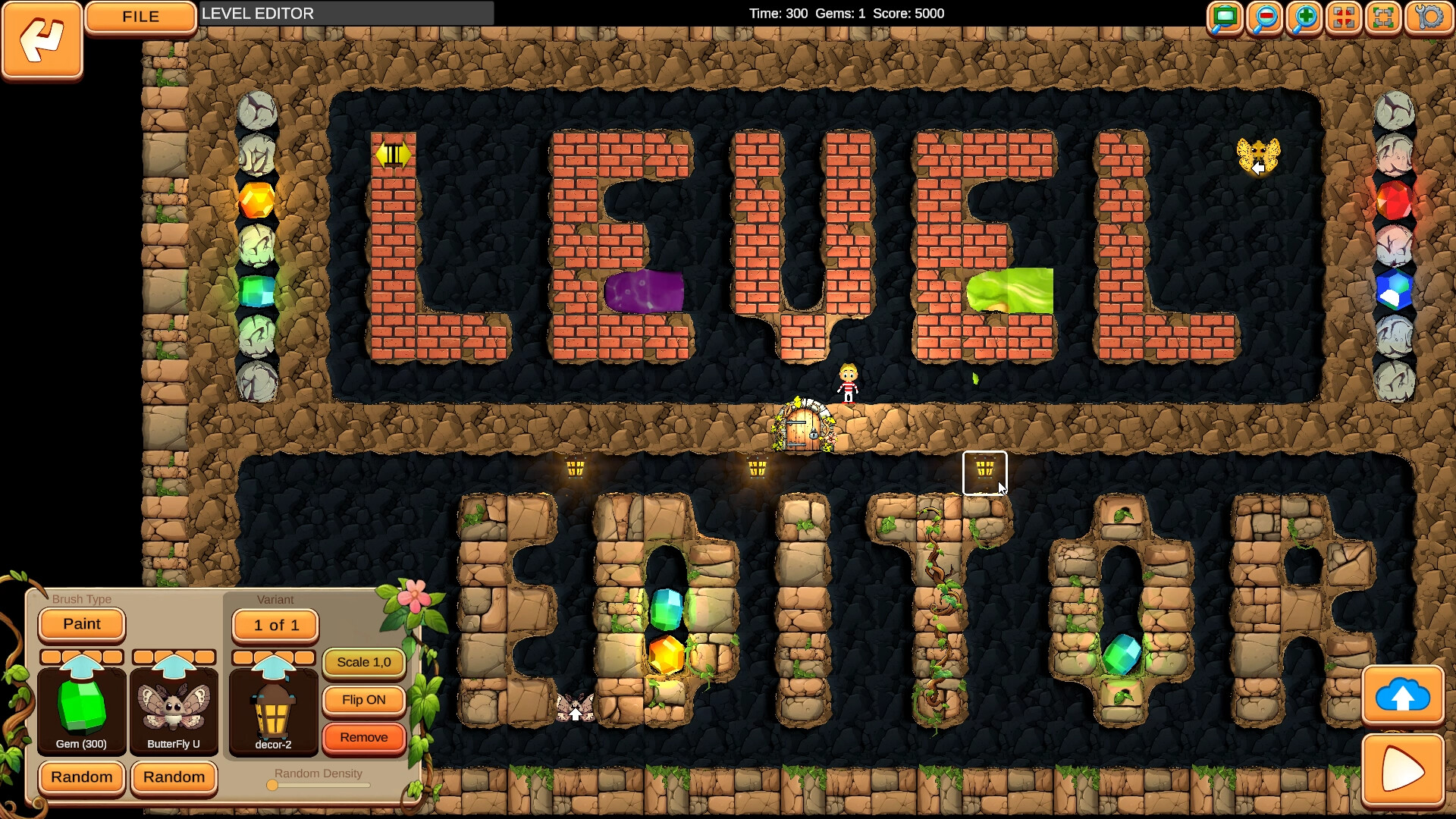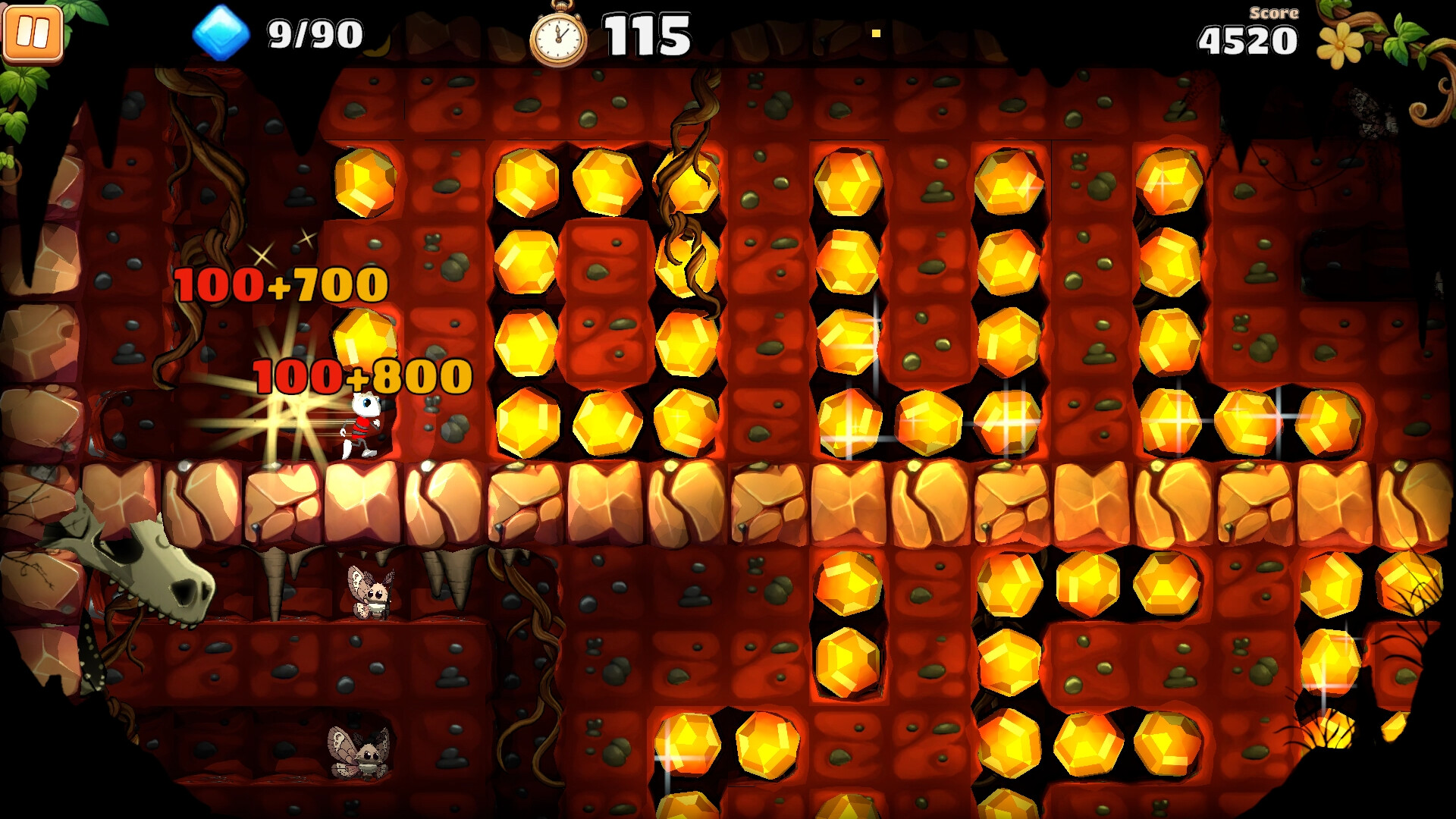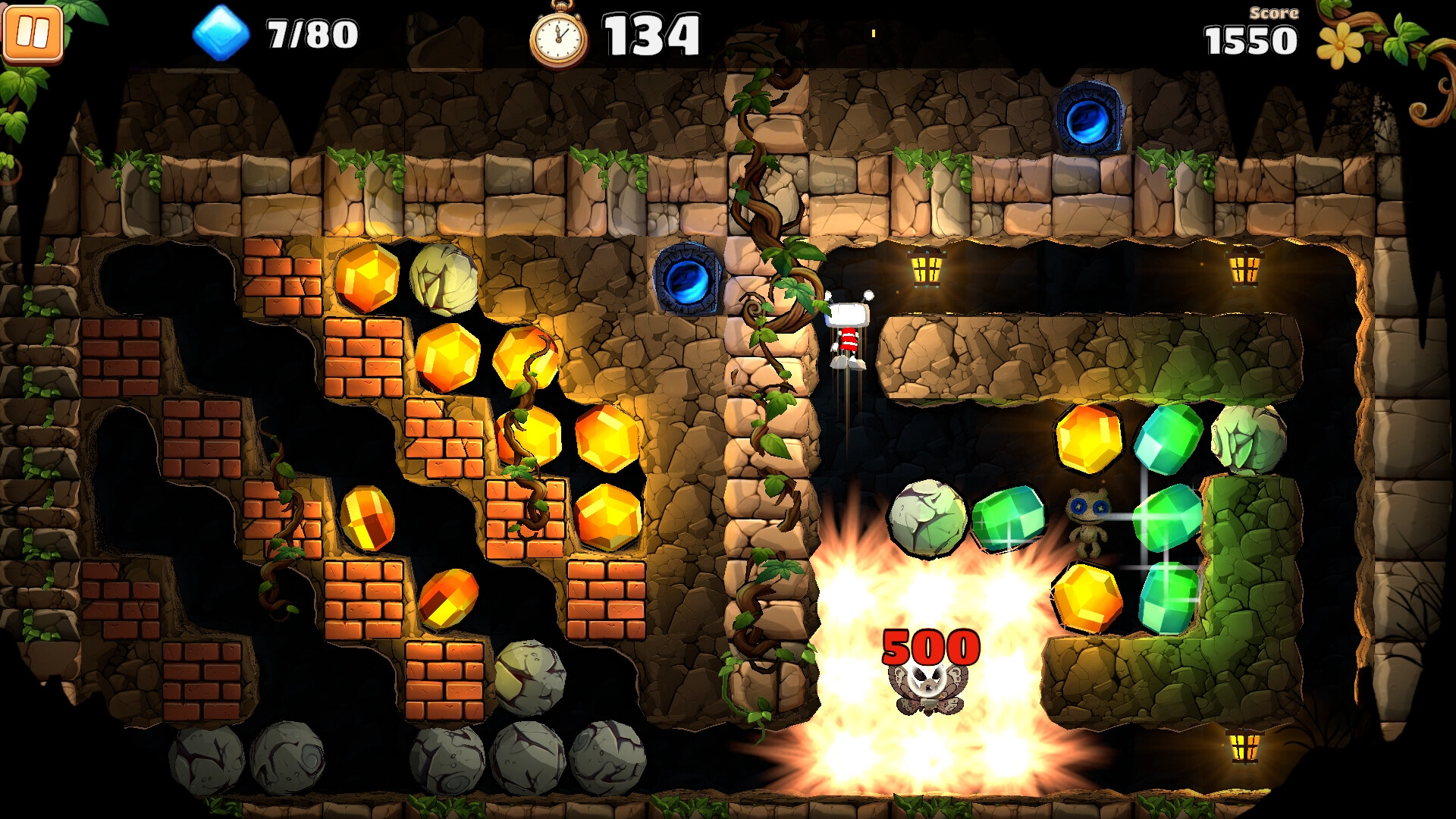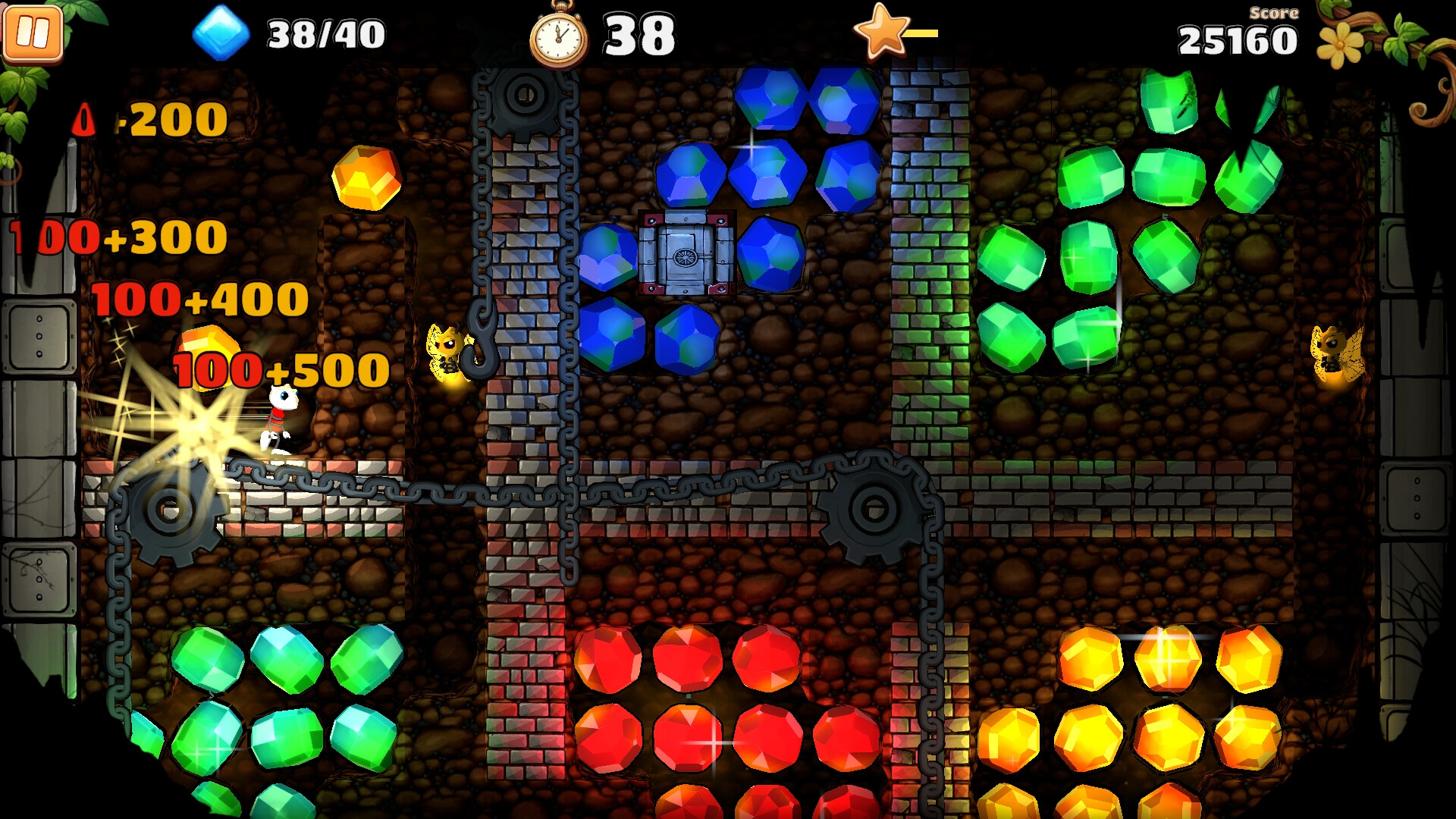Boulder Dash 40th Anniversary – Digging Through Nostalgia or Just Another Rockslide?
Hello everyone. Strap yourselves in because we’re about to dive headfirst into the dirt, gravel, and nostalgia pit that is Boulder Dash 40th Anniversary. Yes, the game that had you nervously dodging falling rocks back in 1984 is shambling back into the daylight like some stubborn fossil that refuses to stay buried. And apparently, it’s convinced it can compete with today’s gaming circus. Well – let’s check if this rock still shines like a diamond, or if it’s just another shiny pebble we’ve already kicked down the road many times before.
The Dusty History They Keep Selling You
So, we’re celebrating 40 years of Boulder Dash. That’s four decades of Rockford collecting tiny diamonds while dodging instant-death-by-gravity. Yay. The marketing fluff tries hard to convince you this is an epic return, the “most faithful and modern” edition ever. But let’s call a spade a spade – or, in this case, a shovel a shovel – it’s the same gameplay you’ve been served since Reagan was president. You move rocks, avoid getting crushed, grab your gems, and run out the door. Revolutionary gameplay? No. Timeless design? Sure, I’ll give it that much. But trying to position this anniversary edition as if it’s the Second Coming of Tetris is laughable at best and makes me want to check my blood pressure gauge at worst.
New Engine, Same Old Rocks
Now, it’s not all doom and gloom, or in this case caves and collapse. To be fair, the game is rebuilt on a modern engine, which makes it play smoother than an endoscopy on a sedated patient. The controls are responsive, and there’s none of that input lag nonsense you sometimes get when developers shovel old code into shiny wrappers. Everything feels precise and crisp, which is critical when one stray move means you’re decorating your pixelated grave with a 16-bit tombstone.
But it still suffers from what I’ll call the “retro illusion syndrome.” Developers slap on high-res graphics, holler about new mechanics like “acid eating rocks” or “enemy generators,” and claim it’s game-changing. It’s not. It’s the same gameplay loop: move, dig, grab, escape. It’s addictive because it was always addictive, not because some shiny new German composer added an epic soundtrack. And don’t get me wrong, Chris Huelsbeck is a legend, but plastering his name here feels a bit like slapping a Ferrari logo on a lawnmower. Yes, it’ll sound good, but you’re still mowing grass.

Content Slathered on Like Peanut Butter
The major selling point? Content. Lots of it. We’re talking:
- 60 classic levels remastered from the original trilogy
- 180 new levels designed to test patience, strategy, and reflexes
- Six new worlds and three “fan worlds” based on community contributions
- New gimmicks: acid rocks, vertically growing walls, surprise eggs (because why not?)
- A level editor, complete with endless user-generated caves for masochists
That’s a very respectable buffet, but quantity doesn’t equal quality. Adding 180 new levels sounds amazing, but if half of them are just variations of “more rocks, more diamonds, slightly faster enemies,” then congratulations, you’ve just achieved procedural tedium. Quantity padding has been a dirty trick since the dawn of gaming, and I’ve yet to see a retro revival that dodges the pitfall of throwing content at you in lieu of actual innovation.
Community Content – A Blessing and a Curse
Community-made levels are both a gift and a curse, like giving every viewer in a theater the ability to rewrite the ending of a film live. On one hand, it guarantees infinite replayability. On the other, it opens the floodgates for absolute garbage maps made by someone who’s likely streaming in their basement while shouting conspiracy theories about lizard people. Yes, some absolute geniuses might create levels that reinvent the game’s flow. But for every gem, there will be ten maps that trap you 30 seconds in with no escape. And you’ll only find out after wasting your evening testing them. That’s the reality of user-generated content: diamonds buried under plenty of dirt, fittingly enough.


The Nostalgia Time Machine
The developers want you to believe this is like “time travel.” Newsflash: time travel in gaming doesn’t exist. What you really get is a pixel-perfect recreation with modern touches. That’s not time travel – it’s hospice care for aging IPs. Still, the patient is surprisingly healthy, I’ll grant them that. Boulder Dash was a clever puzzle-action game when it launched, and its formula hasn’t entirely lost its charm. If you’re an old-school fan, this will scratch the itch. For newcomers, it’ll feel quaint but not revolutionary. Think of it as forcing your younger cousin to play the original DOOM before showing them Doom Eternal. Sure, they’ll enjoy it, but they’ll also wonder why you keep living in the past.


The Verdict: Rock Solid or Just a Rock?
So, does Boulder Dash 40th Anniversary deserve a victory lap? Sort of. It’s technically polished, it’s stuffed with levels, the soundtrack is glorious, and it does exactly what it sets out to do: preserve a classic while expanding it. I’d call it one of the better retro revivals, which isn’t saying much when the competition often feels like a scam wrapped in nostalgia-colored packaging. But let me be perfectly clear: this isn’t some monumental reinvention of puzzle gaming. It’s a nice little time capsule with a few modern upgrades sprinkled on top. Fans will lap it up, newcomers will shrug politely, and the rest will wonder how we got convinced that digging through pixelated dirt for the thousandth time is a cultural event.
This isn’t the second coming of gaming greatness. It’s a polished fossil with a shiny bow, and that’s… fine.
Overall impression? Good, but with a huge asterisk. It’s fun, it’s faithful, and it’s well-made. But it’s not revolutionary and it won’t win over anyone not already nostalgic for the 1980s. Worth digging into if you’ve got the itch, but don’t expect more than a remastered stroll through caves you’ve explored many times before.
And that, ladies and gentlemen, is entirely my opinion.
Article source: BOULDER DASH 40th Anniversary


